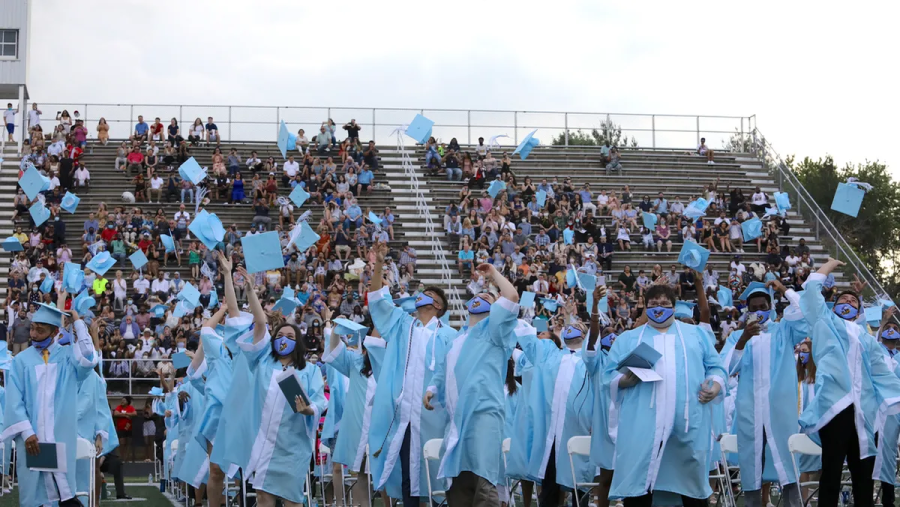Beyond Guilford: what the class of 2022 faces
Guilford’s soon-to-graduate Class of 2022 faces both opportunities in jobs available but also setbacks from inflation to rising student loan rates. Higher education for this year’s graduates will soon become more expensive than it already has in recent years, and this does not begin to factor any tuition/fee increases budgeted by colleges and universities for the 2022-2023 academic year.
One setback for this year’s graduating class looks to be certain about three weeks after the date of graduation. Because the interest rates for student loans are based on the 10-year Treasury yield, the expected Federal Reserve rate increase could increase student loan rates from the current 3.06% to as much as 6%. This will undoubtedly make affording higher education for graduates, who are already worried about taking on long-term debt equivalent to buying a car or even a mortgage down payment on a home.
The maximum loan amount allowed for a first-year, dependent undergraduate is $5,500. If as expected, the rate rises in the next few weeks over 1-1/4%, the loan amount repaid will increase an additional $450 interest over the 10 years for the loan. Fortunately for the Class of 2022, the cost of borrowing money for graduate school will rise over 3%, twice that for undergraduate students. However, those new undergraduate students will see their interest climb from 6.28% to 7.66%, about a 1.4% increase. If graduates take out the maximum $14,000 the Parent PLUS loan amount allowed, the student and or parent will pay an extra $1,200 in interest in loan payments.
First-year college students who plan to take on college debt might want to consider attending an in-state public university or college. Although the $14,000 Parent plus loan maximum does cover the $9,400 average yearly tuition and required fees at an in-state public college, the average out-of-state yearly tuition/fees totals $13,000 (an average yearly total of $27,000) more than the $14,000 Parent plus maximum loan. Private colleges and universities typically run more than $27,000 per year tuition/fees.
Students who choose to no longer be listed as dependent on their parent’s income tax can borrow $4,000 more money for college, up to a maximum of $57,500, or $26,500 as an independent. Other loans in addition to the federal student loans, are considered subsidized loans and are limited to a total of $23,000, for a grand total of $80,500 total for undergraduate loan debt.
Unfortunately, many students learn later that repayment of their federal student loans is guaranteed, meaning the students must repay the full amount and accumulated interest, regardless of income or employment status–quite literally payments from enrollment until grave unless repaid in full. Although Congress and President Biden have discussed wiping out student loan debts, the repayment moratoriums have been only temporary. Still, loans taken out for some for-profit colleges have been wiped out because of false and misleading employment information provided to the student. Trump University was one of those for-profit schools, which students sued to get their loan money back.
None of these figures includes the room and board charges if a student lives in college housing. The average room and board fees typically equal the tuition/fees charged. This means a student who chooses to live in a college dorm will need almost $5,000 more from the parent’s savings.








